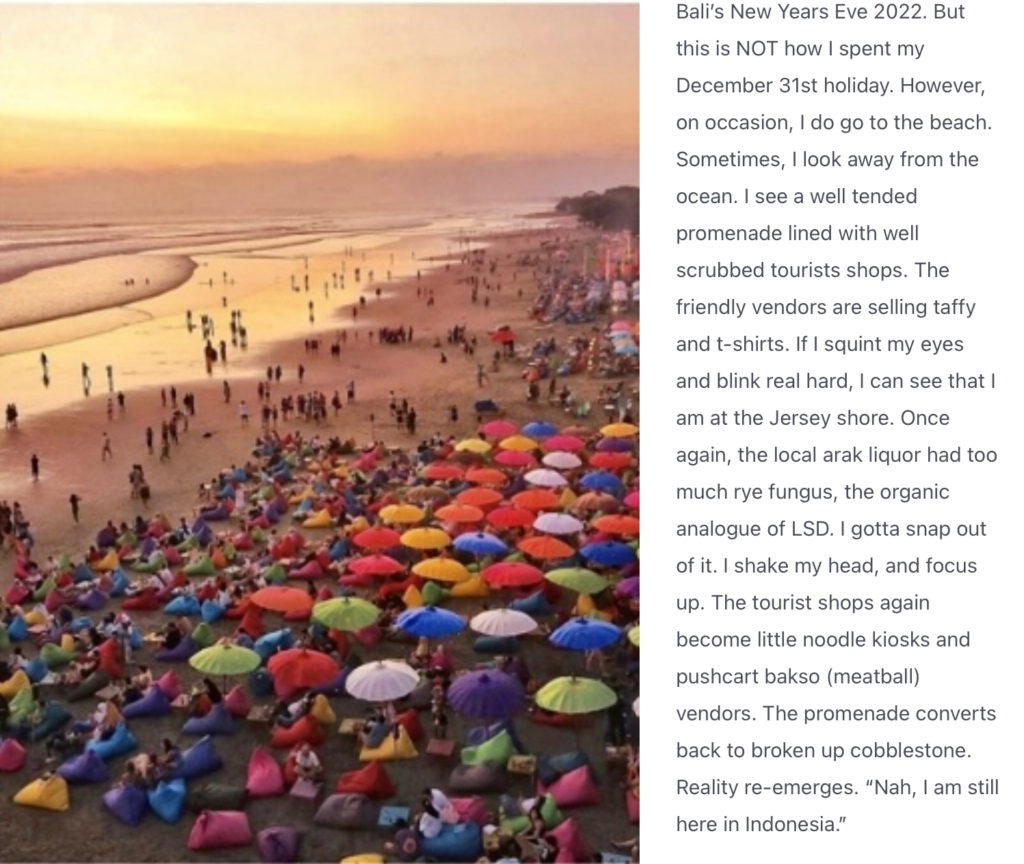Above: New Years Eve 2022 at the La Plancha Bali Bar and Grill in the ever-popular Double Six Beach. I vowed months before to NOT to spend my Bali New Years frolicking on some beach. Instead, my friends and I had inspirational celebrations, some sacred fun!
A Balifornia Christmas — the 2022 Holidays on the Island of the Gods
January 4, 2023 by Made Victor (the Bali name of writer Zephyr Carlyle.) Last October 31st, I was sitting on my balcony in Sanur, Bali, trying to enjoy a sunset “Haloween Happy Hour.” But I was not happy. I scrunched up my lips and muttered: “No Halloween party, no decorations, no women in sexy witch costumes, no treat-or-treaters, nothing!” I almost dropped my drink from the next self-revelation: My Thanksgiving would have no turkey; no cranberries; and no parade, except when the locals come out to watch the magical Barong Demigods strut their stuff down the street. The Ghost of Christmas Future was looking no better. The only Christmas trees would be tarted up palms, all tinseled out; and not a chance of a white Christmas, but plenty of fluffy beach sand! I spit out the words like they were cotton balls:”Bah humbug to Bali!” I started humming, “All I want for Christmas is….” But my mental refrain was “…my regular holiday debauchery.” For me, Christmas is over-rummed egg nog from a carton, late night woozy Christmas parties, and mistletoe fantasies. I would drag my hung-over ass to Church or maybe a Chinese restaurant on that Special Day, depending on mood.
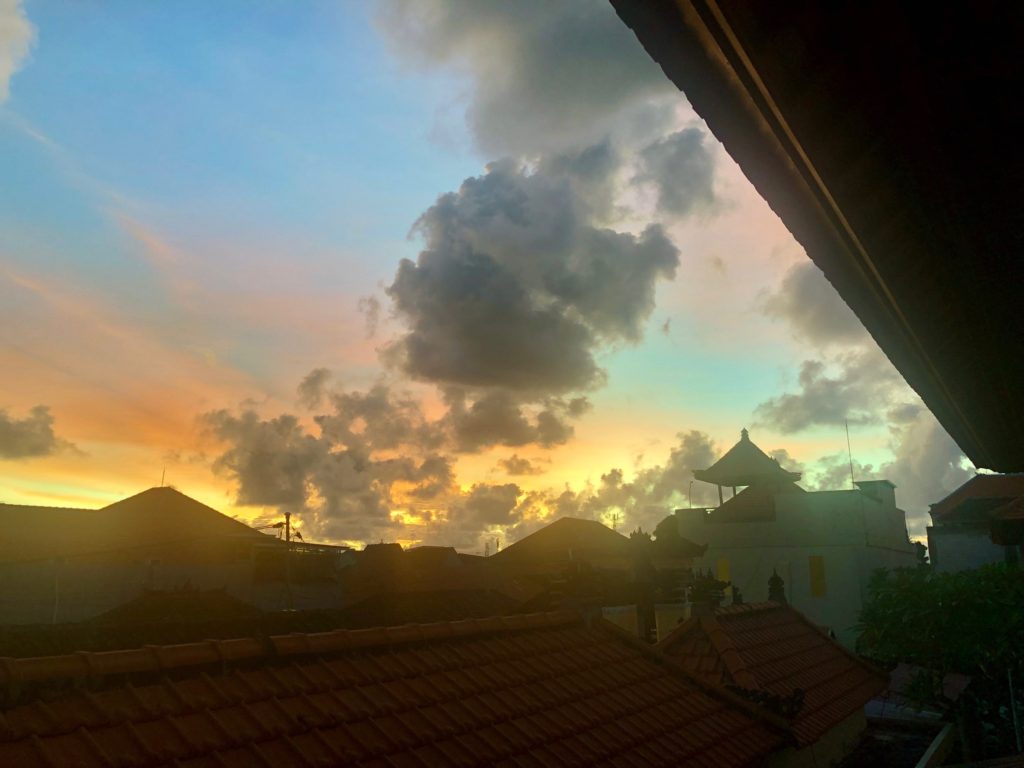
Below: The sunrise over Sanur Beach. I have never actually seen a beach sunrise in Sanur. I ripped this picture off the internet from some guy who is an early riser.
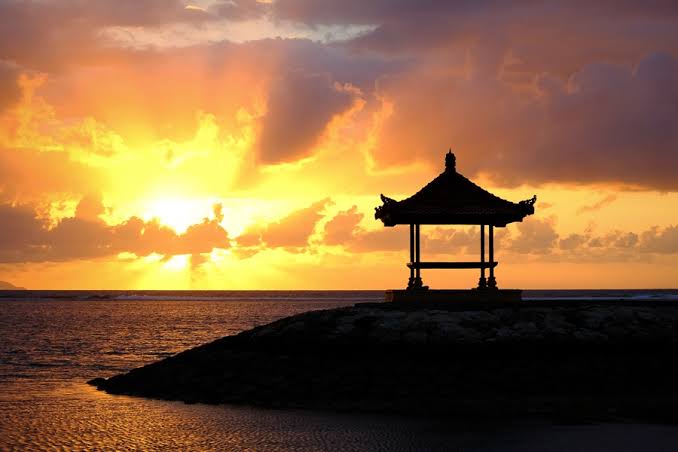
From the depth of my Halloween misery came this desperate plea: “What I could do to save the holidays from total beach boredom meltdown?” Suddenly, I was struck by mental lightning. I fired up with the Christmas spirit, Bali style. I vowed not to spend my end-of-the-year holidaze in the local tourist tradition of beach, booze, and chasing Tinder babes; with a little surfing on the side. Absolutely not. For the love of God, I vowed to forsake the salacious. I would spend the Christmas season searching out the sacred. While it sounded daunting, fulfilling this quest was easy in Bali, the Land of the Gods. Here is my story:
Post Cards of a Special Christmas Baliday
I have been gratefully stuck for a year and a half in Bali, Indonesia. In that time, I have criss-crossed this Delaware-sized island to visit all of Bali’s Big Ticket Rides and Attractions. This holiday season, I would take the road less travelled. I avoided all the headliner locations — all the beach-babe-blanket places; the huge playground swings curling out and over waving, green rice paddies; the five-star, luxury ashrams; the ultra-trendy night club districts like Potato Head (true name) and their ilk.
In contrast, we sure did celebrate Thanksgiving, Christmas and New Years; but we enjoyed each one Bali style! When in Bali, do as the Hindus do. [Bali has a population of four million and is 85% Hindu]. We took road trips, one trip to celebrate each of the sacred-secular Western holidays — all in search of the Godhead. To carry out this sacred quest, I dragged along some locals for all three adventures. Together, we went on pilgrimages to sacred shrines, kind of like that Canterbury Tales/Chaucer thing.** Thanksgiving Day we took in the Sacred Spring Waters; Christmas Day was celebrated at the Bat Cave; and for New Years, we experienced the temple and cemetery of Trunyan, a traditional Bali village.
[**Just in case: One of the most important works in English literature, the Canterbury Tales was written by Geoffrey Chaucer between 1387 and 1400. The Canterbury Tales is a collection of stories about a group of religious pilgrims as they travel together from London to Canterbury to visit a sacred shrine.]
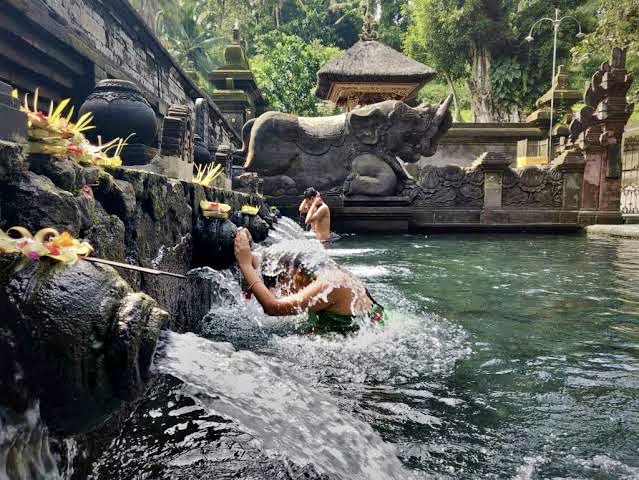
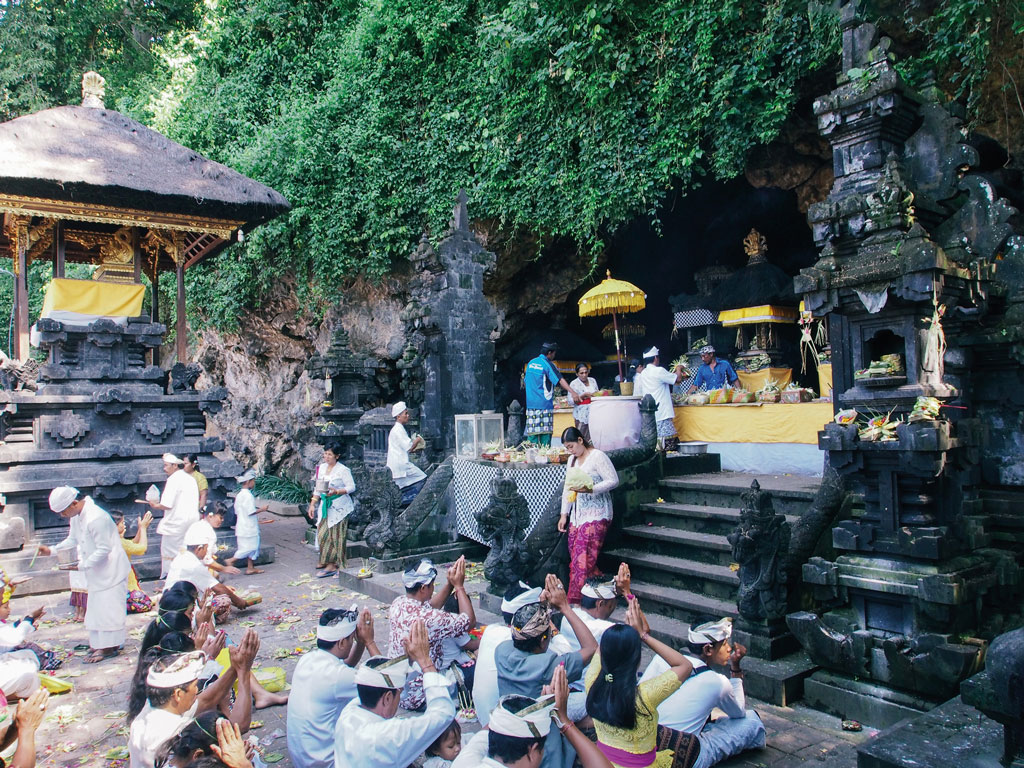
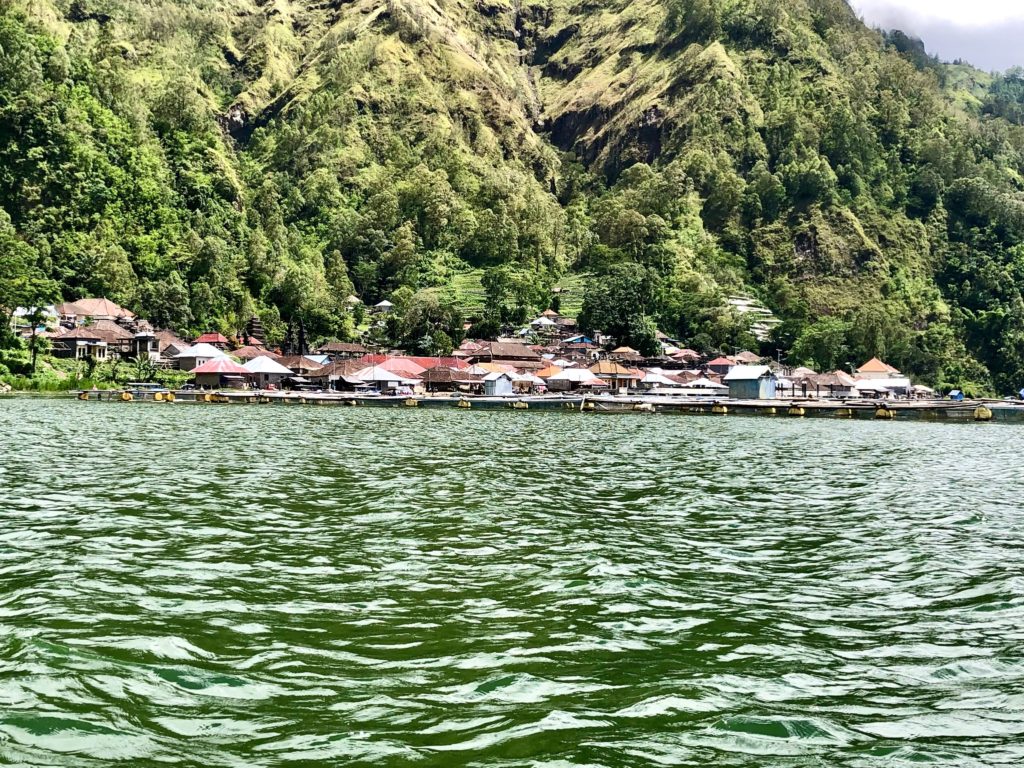
Thanksgiving at the Sacred Springs of Pura Tirta Empul
The Bali Bulgari Hotel website says it best: “The Temple of Tirta Empul, one of the most important for Balinese Hinduism, greets visitors with its sacred purification ritual dating back over a thousand years. Tirta Empul literally means “sacred” (empul) “spring” (tirta). Pura Tirta Empul translates as the Temple of Sacred Springs. The fragrance of incense, the flower petals floating in the pools, the hypnotic gestures of devoutly whispered prayers make the atmosphere intense and magical. Adherents to the ritual enter the water fully dressed in a sarong and sash. The temple, in the Hindu-Balinese style, was built in 962 AD during the Warmadewa Dynasty. After a large garden at the entrance, the Tirta Empul unfolds in the classical Hinduist subdivision of three levels. The Jaba Pura is the first courtyard which is entered through a stone portal, it contains a pool and various shops. The second courtyard, Jaba Tengah, is comprised of two pools for ablutions and thirty springs of holy water. However, the most intimate part of the temple is the Jeroan, the inner courtyard, an area shrouded in the silence of prayer, where women are obliged to fasten their hair.”
The Sacred Springs Was Uplifiting on All Levels
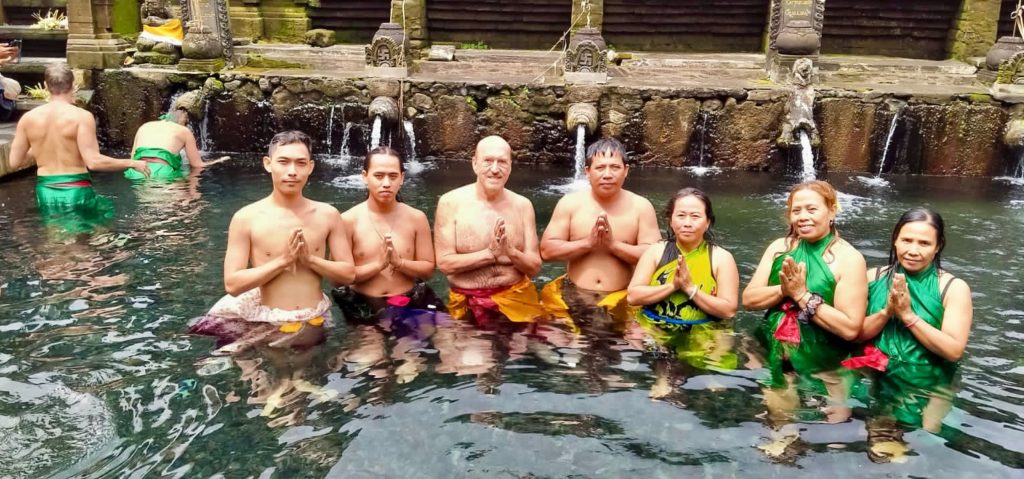
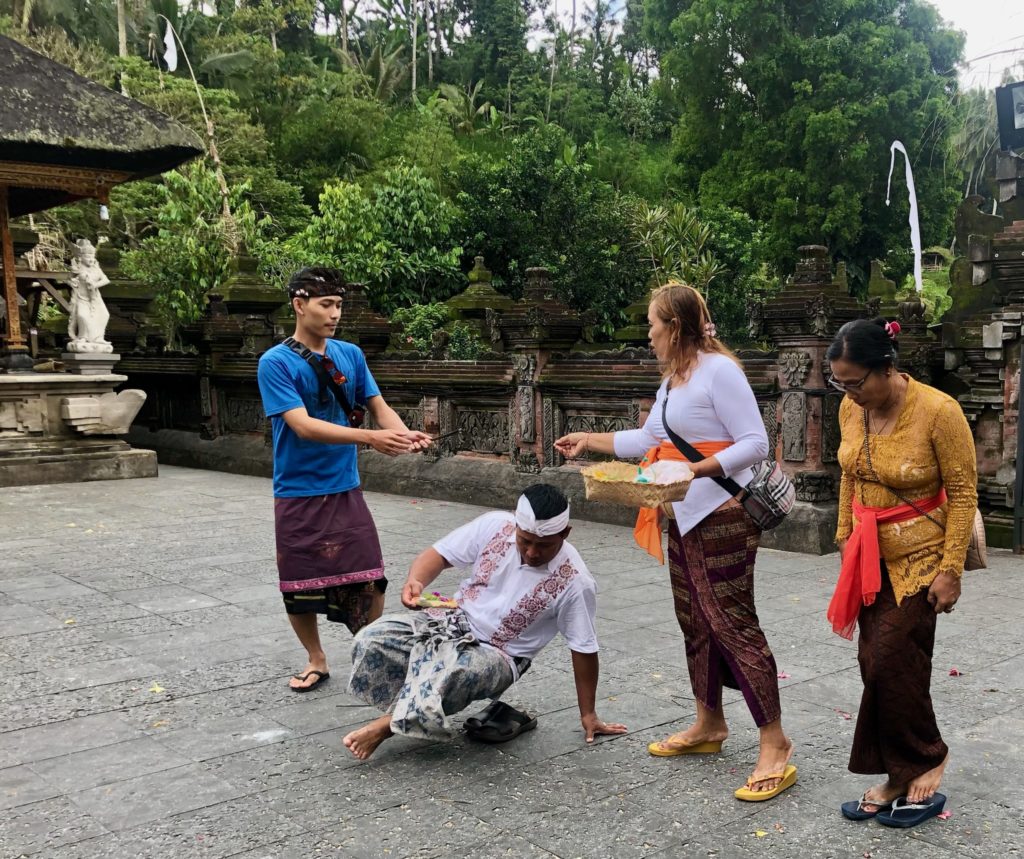
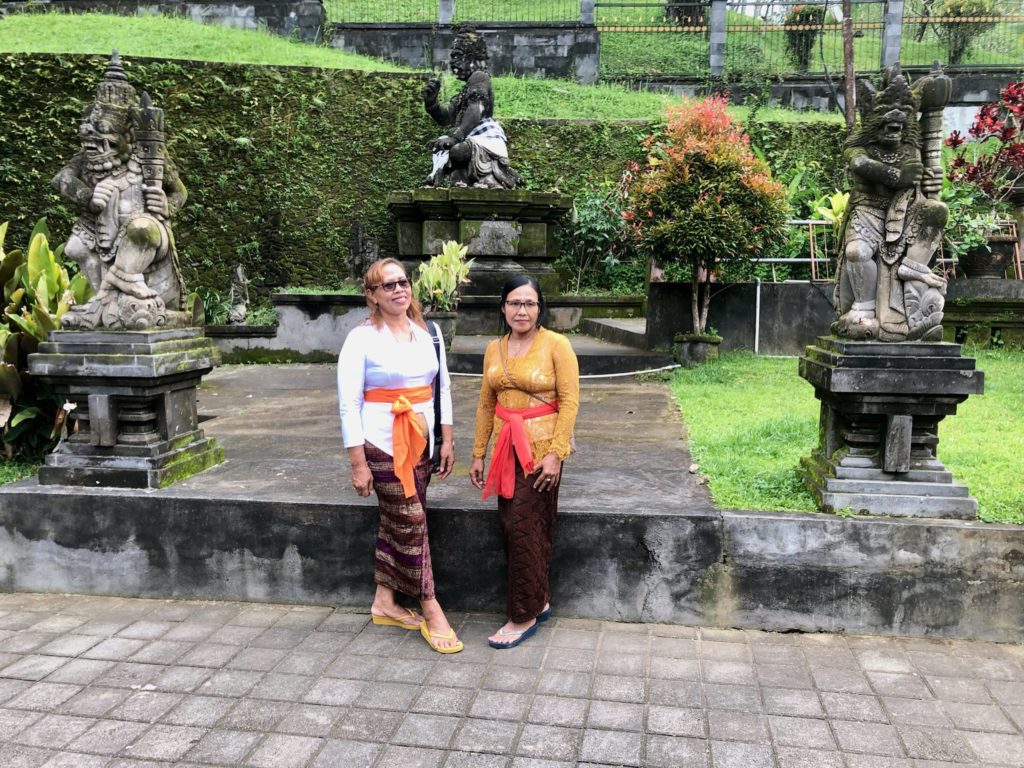
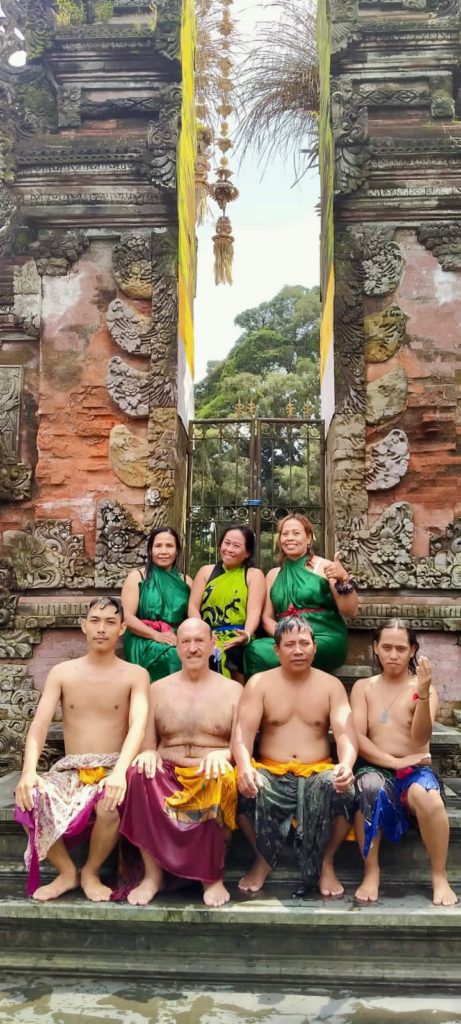

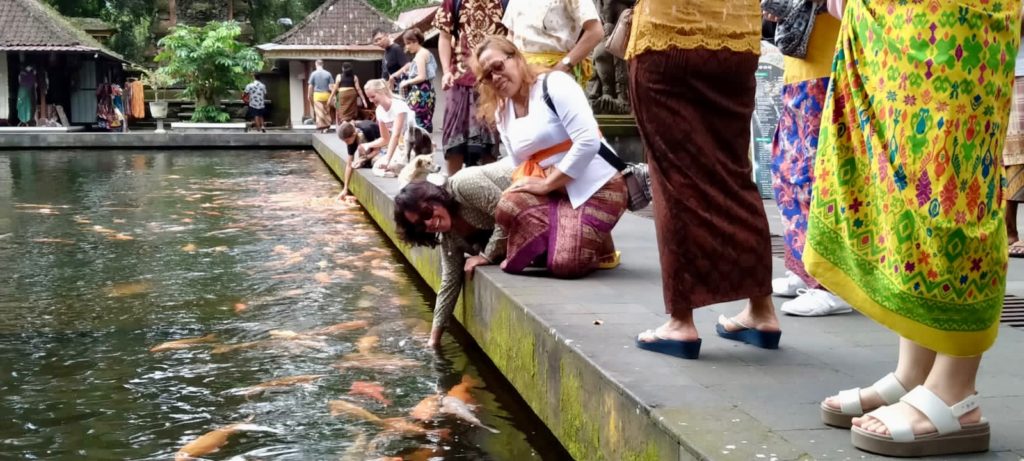
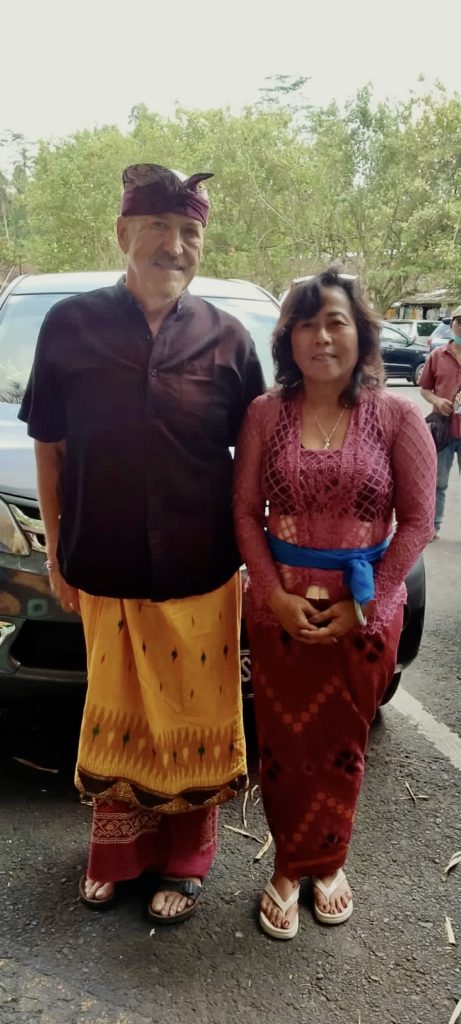
Christmas at the Bat Cave Temple of Pura Goa Lawah
The name of this temple, Pura Goa Lawah, literally translates to Mountain Temple of Bats. The Temple features altars and shrines built around a cave entrance. The cave is home to thousands of bats. According to local holy scripture (the Siddhimantra Tatwa), the bats protect a giant king snake. In keeping with the sweeping Hindu take on things, the snake is depicted as a Holy Dragon named Basukiis, and he does wear a crown. The Dragon King is camouflaged behind the thousands of bats that cling to the caves’ ceilings and walls. Basukiis only leaves the cave for two reasons. For one, he exits the cave when he bathes in the ocean just across the street. He also leaves his lair when he travels to the Holy Mother Temple, Pura Besakih, located at the foot of nearby volcanic Mount Agung. He accesses Pura Besakih through a connecting tunnel inside the bat cave. Long volcanic “worm holes” exist on other volcanic islands, like Hawaii, so there may be a real tunnel — no one who is talking can confirm or deny. The picture on the left below is main altar. Behind the altar is the bat cave that is detailed in all the other photos in the gallery section immediately below:
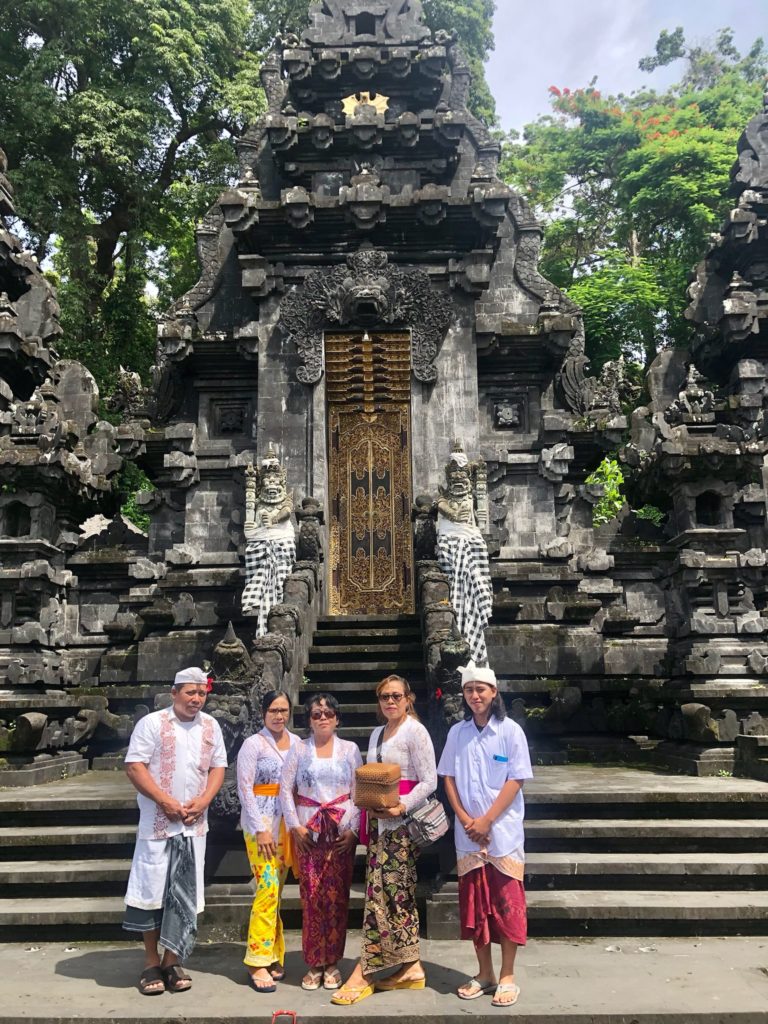
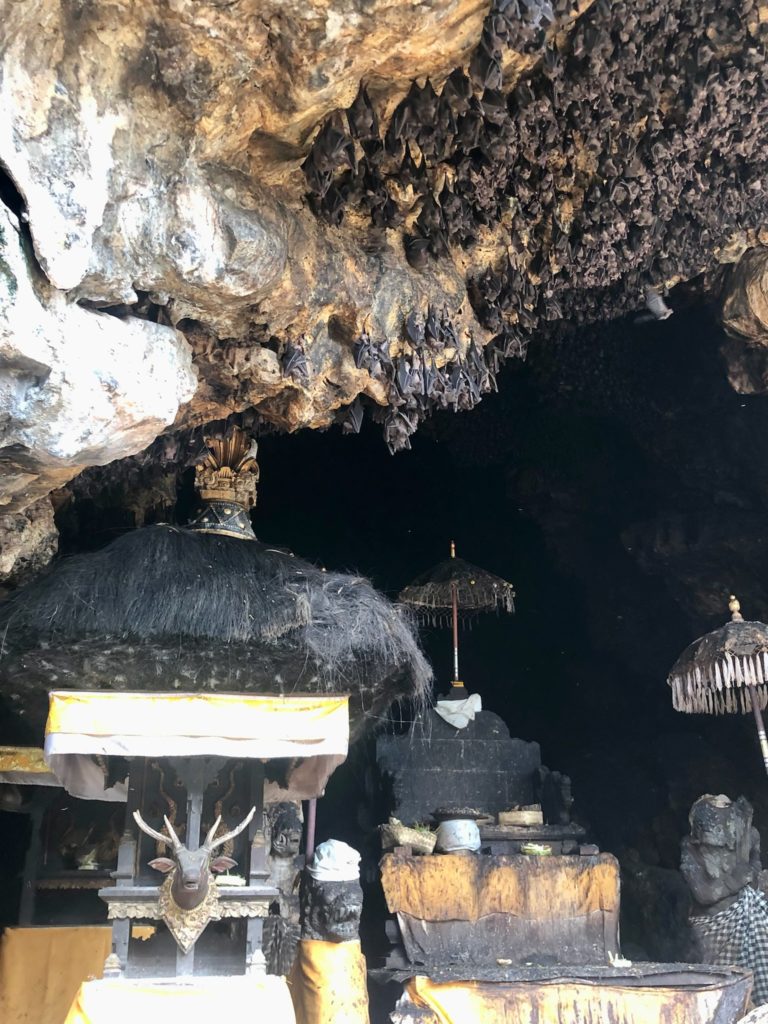
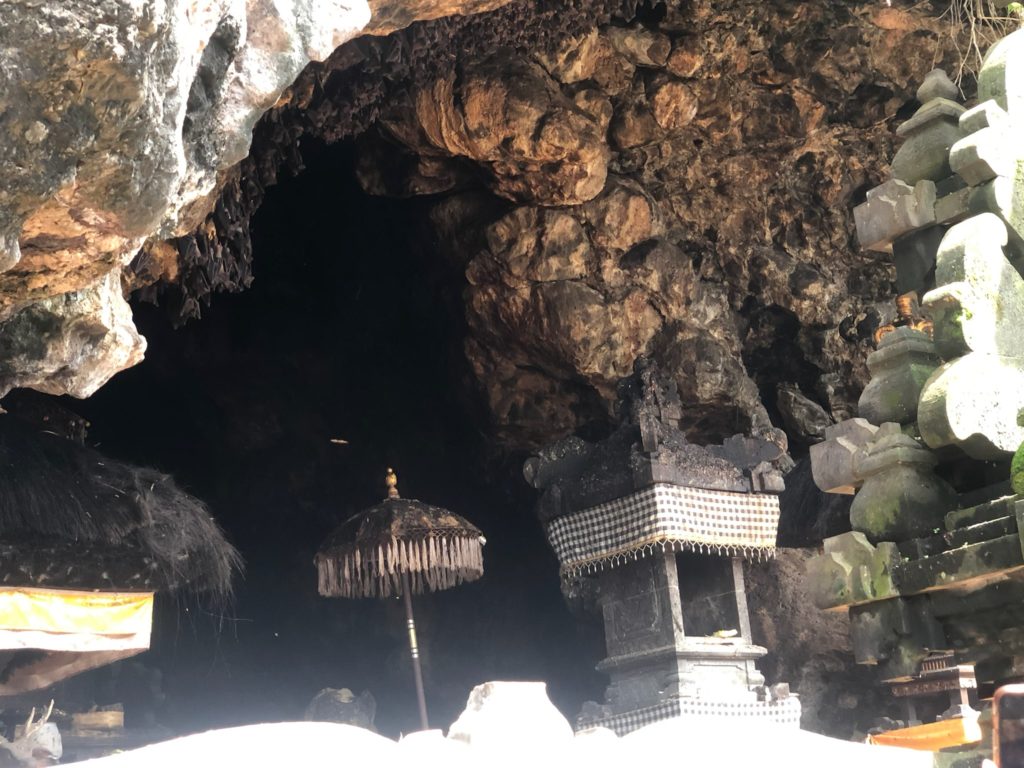
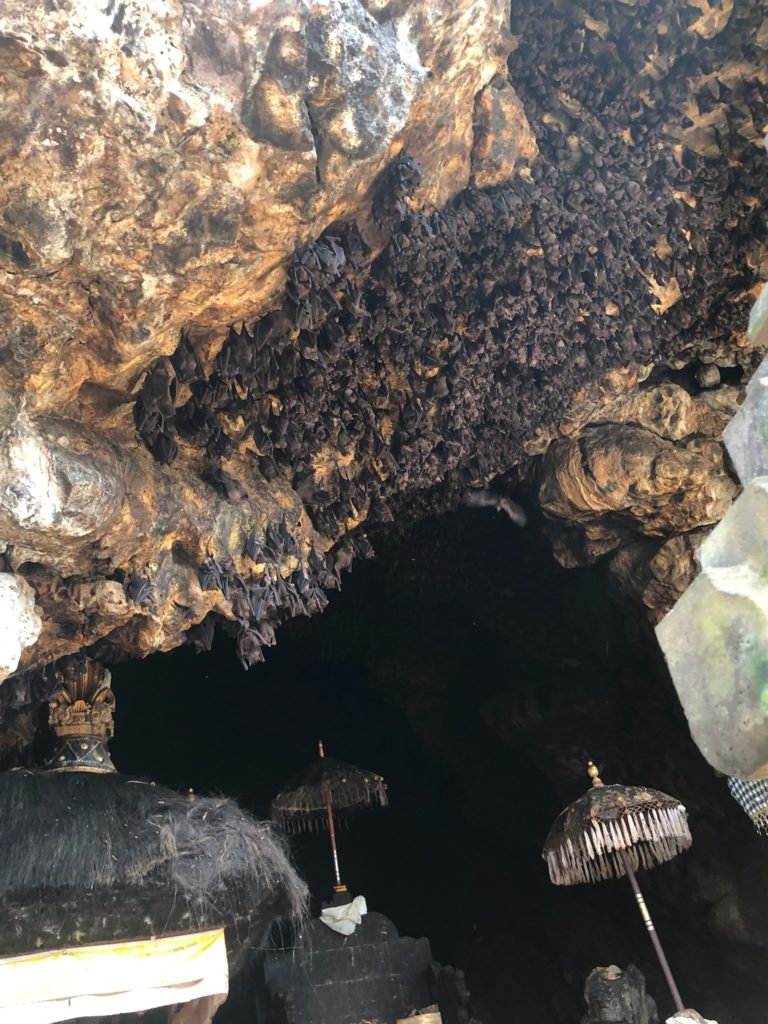
The Temple has other sacred spaces, in addition to the main altar and bat cave. All of the buildings and outer courtyard areas are vibrant with big energy and beauty:
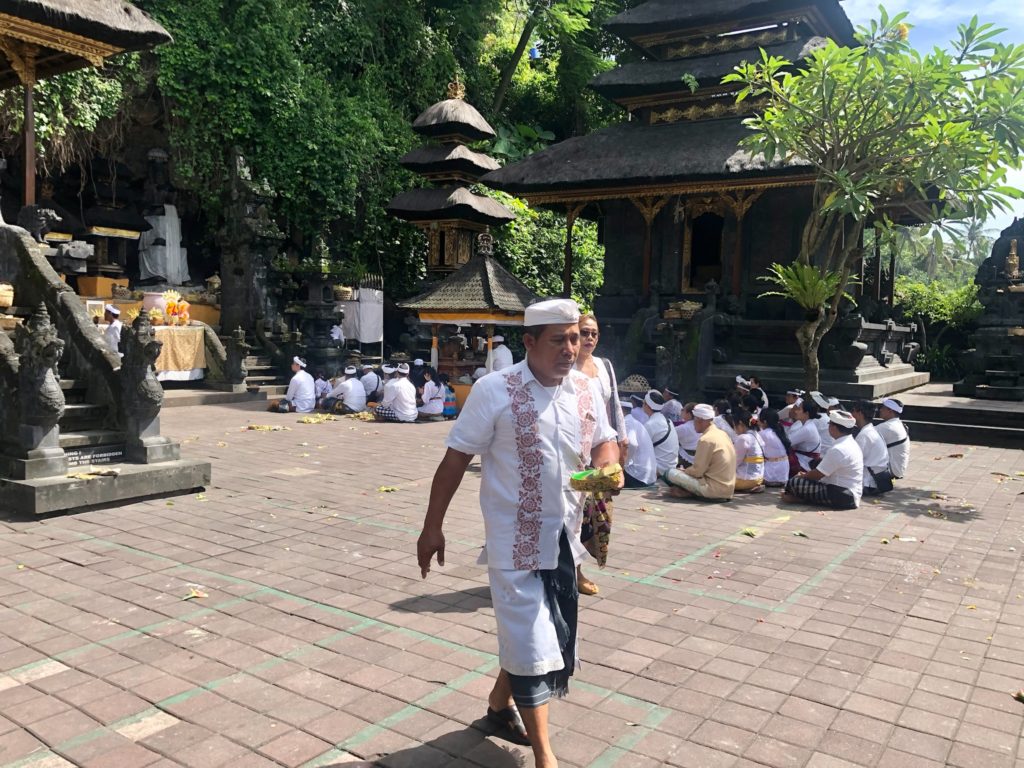
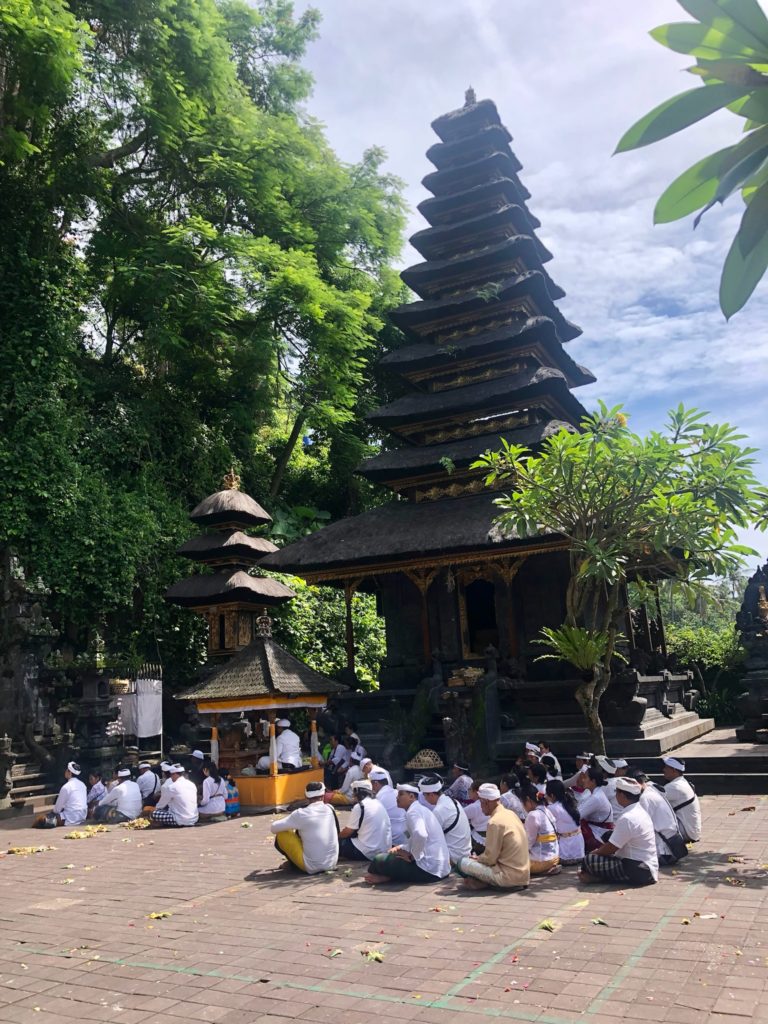
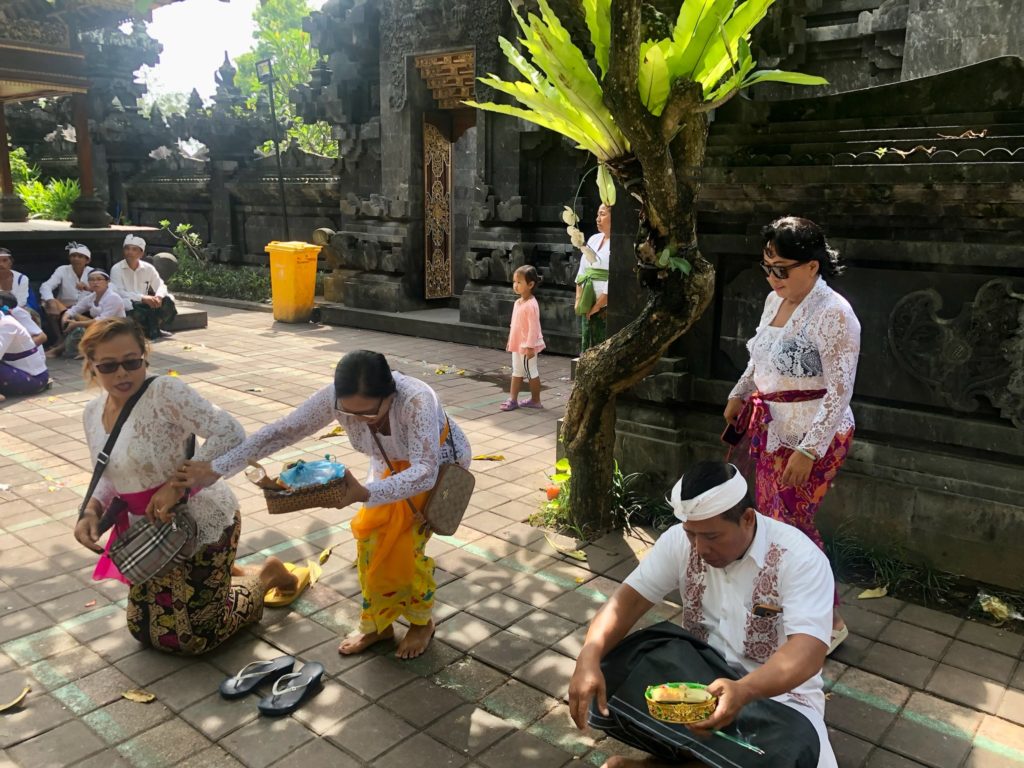
New Years at Trunyan Village
Trunyan is an isolated traditional village on the shore of Lake Batur. The lake and adjacent volcano is in the major town of Kintamani. We spent New Years in Kintamani, an out-of-the-way, interior town that does get substantial tourist traffic. However, most visitors are domestic tourists coming from other parts of Indonesia.
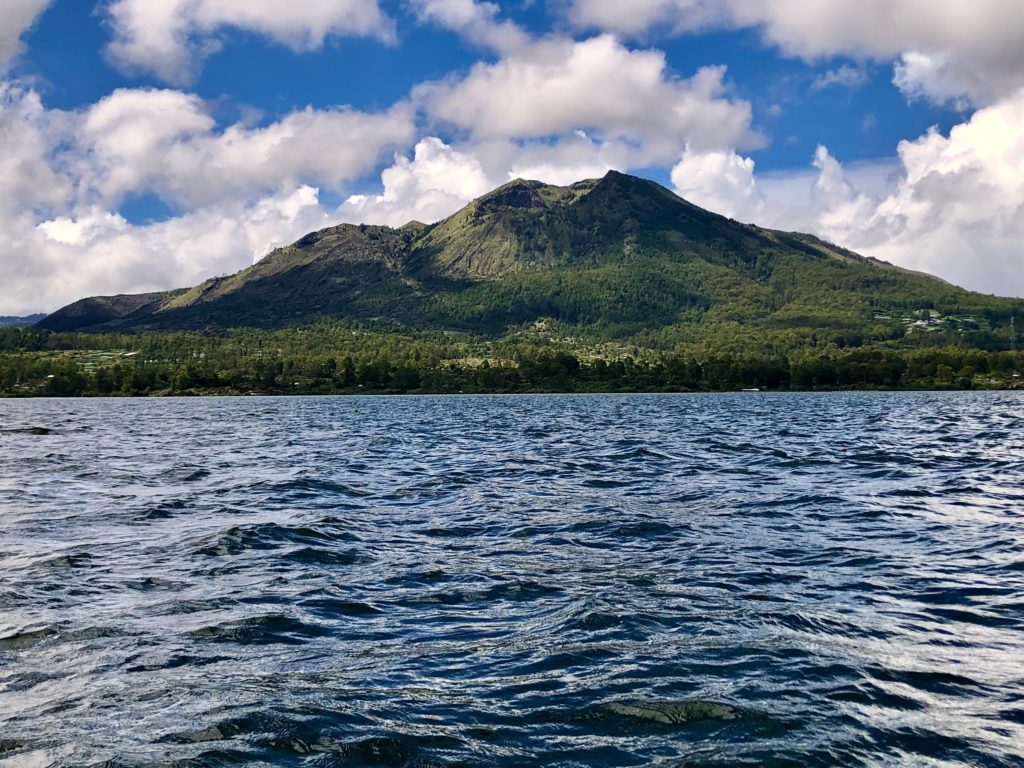
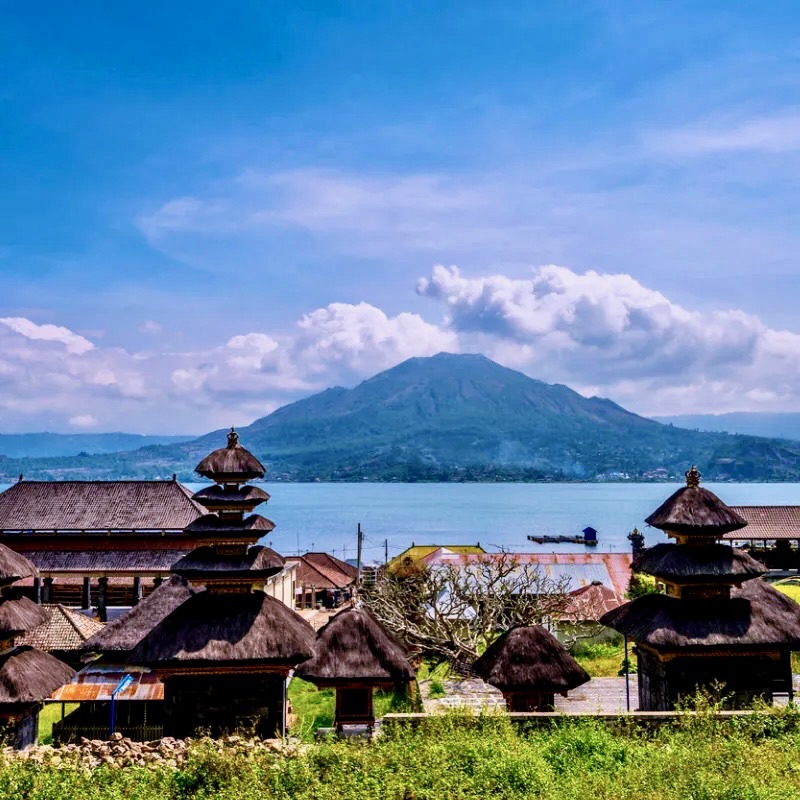
Nestled on the shores of Lake Batur is Trunyan, one of the handful of surviving traditional villages of the Bali Aga people, the truly indigenous people of this island. The exact date of their arrival in Bali is unclear. However, whenever the first waves of Javanese or others landed in Bali, the Bali Aga had already gotten there sooner. According to their story, the Bali Aga all originated from Bedulu Village. Bedulu was ruled by a king who had supernatural powers. Wikipedia tells the king’s story about the village name: “He [the king] could cut off his head without feeling pain and put it back on again. One day, though, his head accidentally fell into a river and was swept away. One of his servants panicked and decided to quickly decapitate a pig and replace the king’s head with the animal’s head. Embarrassed, the king hid in a tall tower, denying any visitors. A small child discovered the secret and since then, the king became known as Dalem Bedulu, or He-who-changed-head.” From that time on, the whole village was called Bedulu.
How traditional is Trunyan? People like me do not know. Outsiders are not allowed in the village. All we can do is a drive-by photo shooting of Trunyan from a lake canoe helmed by a local boat captain. While the village is closed, the nearby local cemetery and ancient temple are open to the public. After viewing the cemetery and temple, I took the picture of Trunyan village set out in the above intro section. The photograph was taken from the safety of our tour canoe. Here is a close up of the same picture:

To avoid confusion in reading: The small section below on Trunyan Cemetery starts below the photo in the left column. The section continues on the right column.
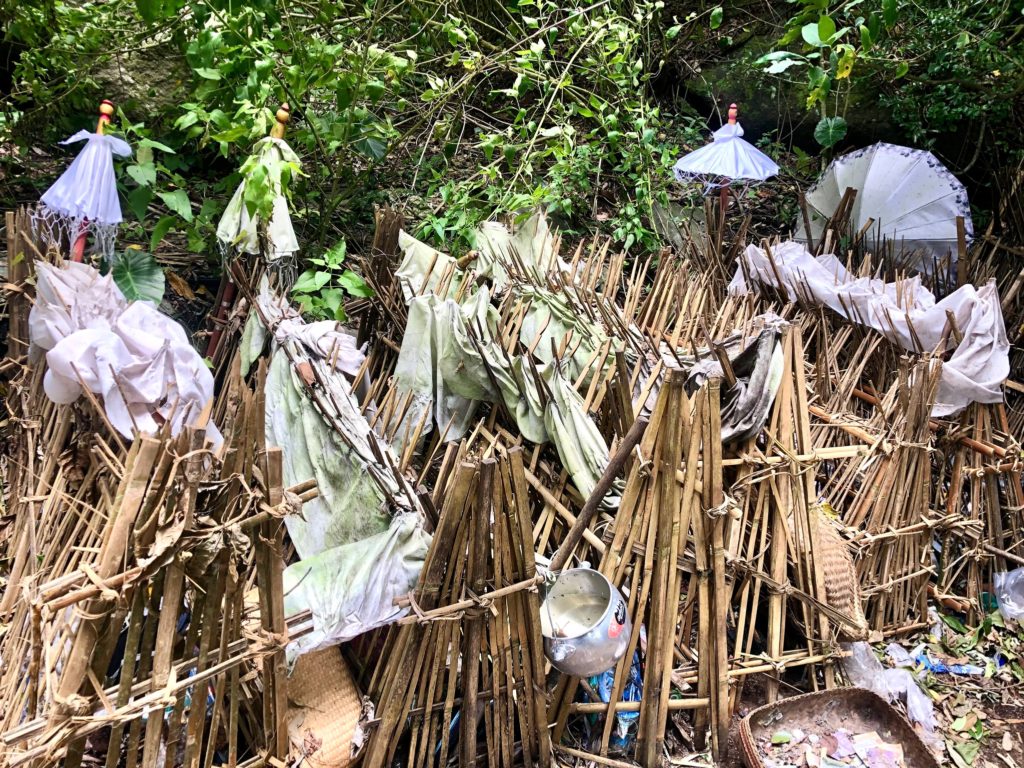
In Trunyan, the corpse is placed openly on the ground and left to decompose. The corpse is simply covered with cloth and placed under an open-lattice bamboo canopy as seen at left. Up to eleven bodies are allowed in one line of side-by-side canopies. When the twelfth person dies, the old line is broken down and abandoned. The corpses, the canopies, and the offerings are just piled up and abandoned. A new line of dead bodies is started just a few feet away from the old corpse line-up. A discontinued corpse line is in the right side photo below.
The presence nearby of sacred and ancient banyan tree, Taru Menyan, or “fragrant tree”, removes the putrid smell of the decomposing corpses and promotes mummification. The family members come visit, and leave items the departed will need to continue: utensils, kitchenware, small household items, money and the like. Over time, the money, the occasional flip flop, human bones, and other stuff gets all scattered around the corpse area and is left unattended. Immediately next to this small cemetery area is a collection of skulls. Trunyan is also called “Skull Island.” The skulls make for the famous take-away picture of Trunyan, that most Instagramable moment.


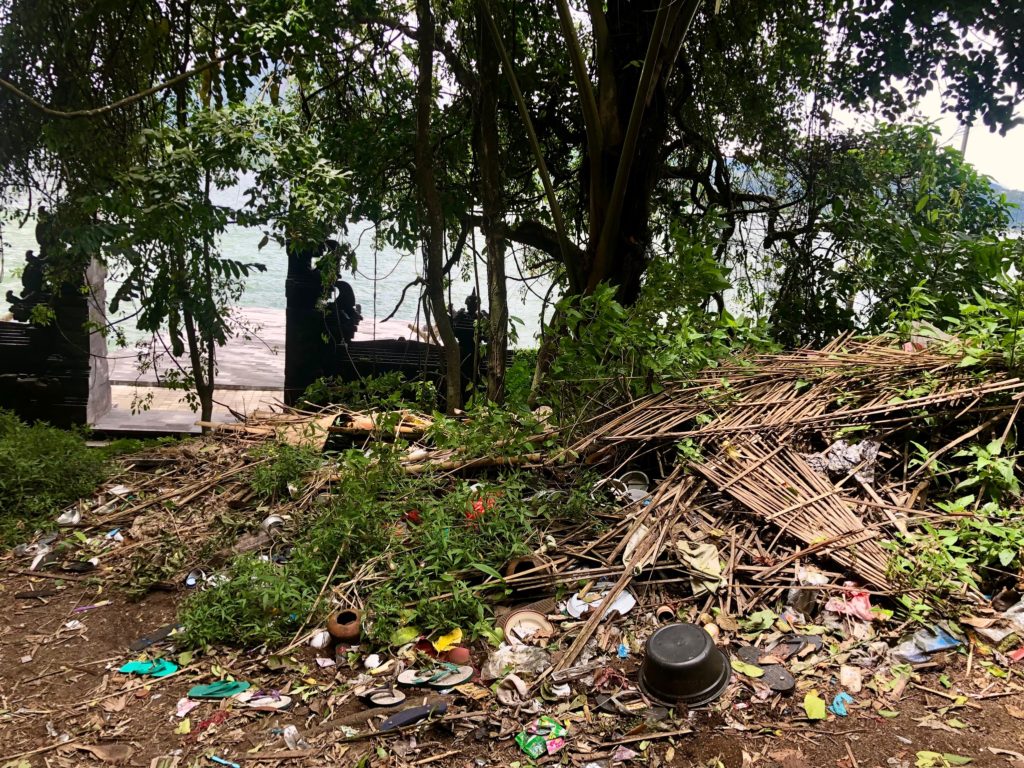
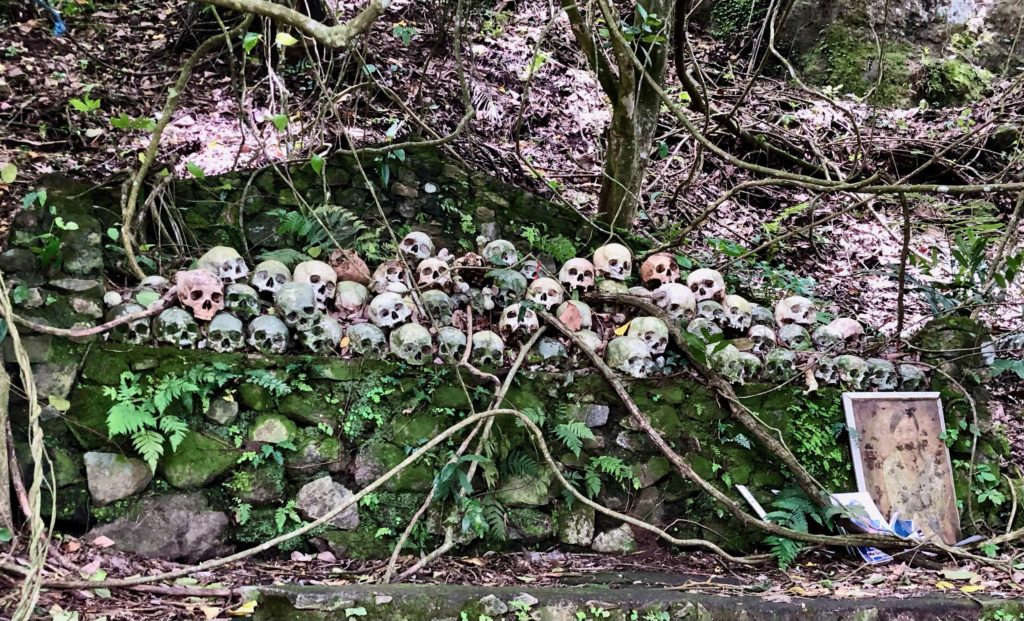
Trunyan Temple. A short walk from the cemetery is an ancient village Temple, the most basic and simple, public house of worship I have seen on Bali. The simplicity left a powerful impression, just as spiritually moving as a more elaborate Temple with ornate gold leaf carvings or a marble altar. Which type of Temple is more spirit inducing — the simple or the elaborate? You would have to see both Temples in person to confirm.
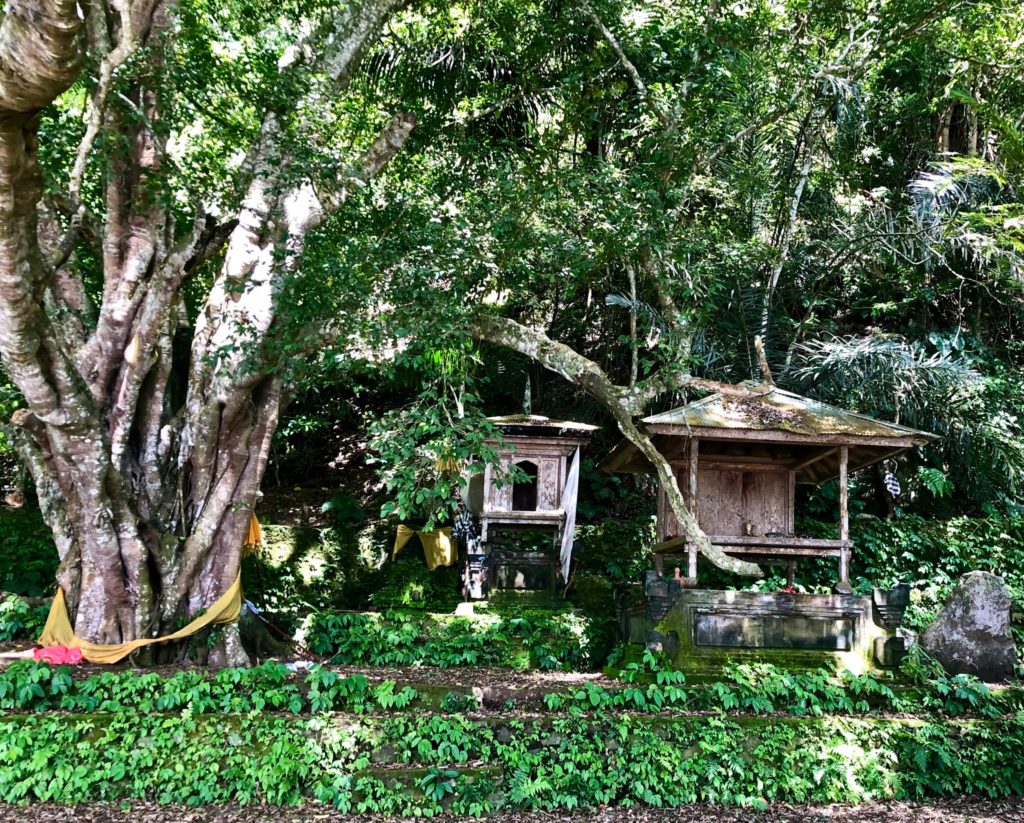
The Ride Home to Sanur Town
With our spirits ascending from our experience, we drove home from Kintimani, the last leg of our sojourn, only to get sucked backed down into the mundane. Specifically, our car got stuck behind a vehicle, slowly crawling down the road. I stuck my head out the window and saw this creative packer on the move. The vehicle ahead of us was a motorbike, not a motorcycle: think Vespa, not Harley. The driver is using a frame or packing armature to overload. This is a small bike: Look at the size of the wheels and rear reflector placement just below the seat. And is the driver sitting in the seat?
Every now and then, you see a Bali motorbike packed with more stuff than the laws of physics, never mind laws of road safety, will allow. I began to think about how human needs transcend the limits of space-time. I got woozy again. It was time to go home and lie down for some quantum period while thinking more about God. Ahh Bali, the sacred and the mundane all swirled up!

Personal Reflection
I have been in Bali now for over a year and a half. I have not left this small island during the last nineteen months. That is okay as sometimes I feel very self-satisfied, like I got this far, all the way to Bali. Cool. But then I realize, I got this far, and there is nowhere else to go. I stand on the sand and scan the Indian Ocean with this clutchy realization: ”I have gotten to the ends of the earth. I am jammed up here in the bottom right corner of the globe. I can see from here to Papua. After that, there is nothing. The earth just ends.” I panic: ”Now where do I go?”
The truth is that I am not going anywhere. I live here now.
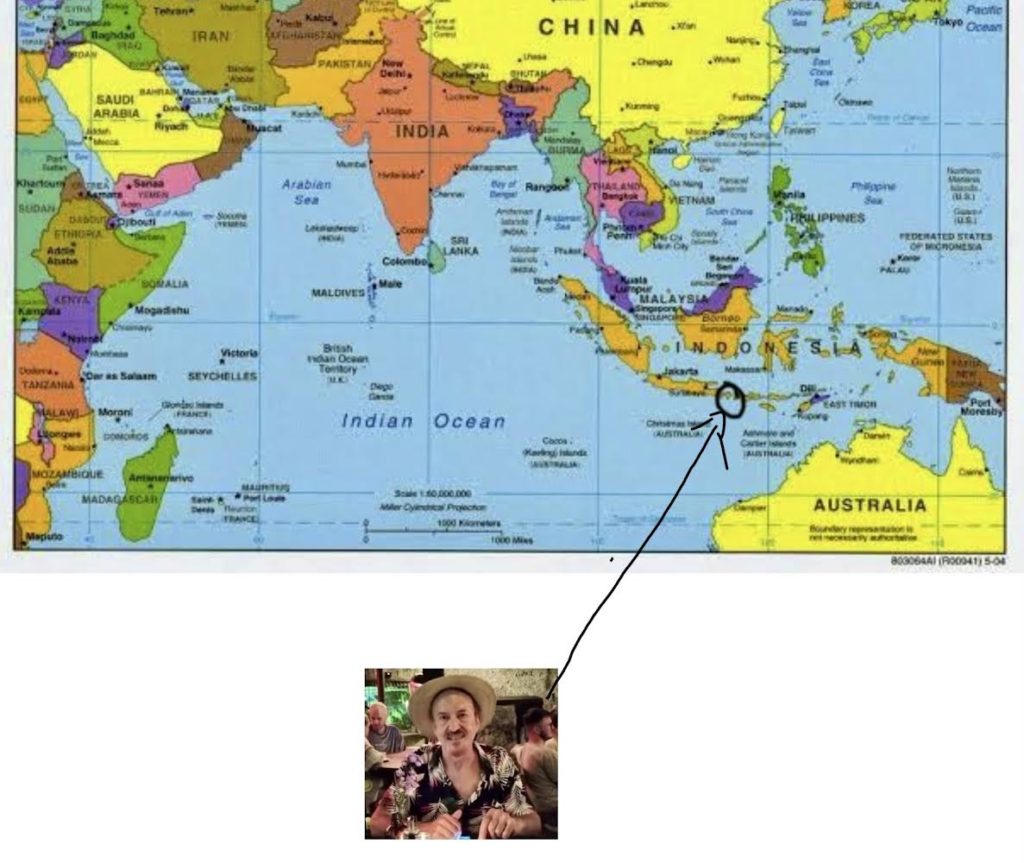
[Reality check: I live in the Bali town of Sanur. From my hometown beach, I can scan the ocean and see a nearby big island. The island is called Nusa Penida. Actually seeing Papua is asking a lot — Papua stretches way out there, about 1,800 miles as the crow flies.]
Please subscribe to Temples ‘n’ Tribes. You will receive notices of current postings, about three new articles a month. Your email or other information will never be sold or used in any other way.
